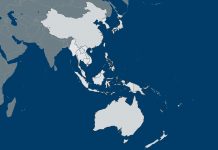After a war, all parties turn to “lessons learned,” a phrase that has become commonplace. A war is, in a hideous way, a learning opportunity, with the goal being that the successes and failures of one’s own forces are identified and the process that led to either outcome is studied and integrated into planning and training for the next war. This is altogether reasonable and necessary. It is also obvious that the process is an occasion for finger-pointing: Taking credit for another’s victories or shifting blame for defeats is an inevitable part of the learning process, not to mention the promotions process. Officers are human like the rest of us. A more troubling aspect of the learning process is that the war gets elevated to revealed truth, and sometimes guides nations to future defeat, the past towering over all the changes that have rendered the lessons learned not only useless but catastrophic. Napoleon’s infantry charge was much valued in 1914, with leaders initially unable to grasp the meaning of the machine gun.
The world is filled with lessons from the Russian invasion of Ukraine. I do my share, but it is important to understand that the middle of a war is not the best place to draw conclusions. Wars are tricky things, as the U.S. learned in Vietnam, Iraq and Afghanistan. Still, it is in battle that the most important lessons are learned and implemented without a two-year renewal process. Staying alive is a great motivator for innovation.
The Russians are said to be throwing major reserves into the fight. They are also recruiting Syrian army forces and, it is said, mercenaries from around the world. Obviously, they expect a long war and are running short of infantry, or something else is happening. Perhaps they intend to follow this war by rolling into Eastern Europe, and they are recruiting foreign forces for occupation duty – an interesting theory for which I have not the slightest evidence. The Ukrainians are mobilizing all their citizens. How long will citizens fight if the battle becomes hopeless?
It is on the strategic level, not the operational or tactical level, that the important lessons can be seen. Russia is a poor country with a middling army, and not a great power. But it is surrounded by even poorer countries with even worse armies. Spirit can get you so far, but a ruthless, disciplined army might get you where you want to go. It is not a pretty sight, but it can be very effective.
In the end, you know who won by whose flag is flying over the capital, and that we will find out.
But the most important strategic lesson so far has nothing to do with Russia or Ukraine. The United States has demonstrated that perhaps the most powerful weapon in the world is the weaponized dollar. World trade requires U.S. dollars, either in hand or as the benchmark against which trading takes place. The euro is a distant second, and no one would sign onto a five-year construction project denominated in yuan. In order to access dollars, one must have access to the place that prints them, the Federal Reserve, or to some financial institution swimming in dollars – and such institutions are obsessed with not running excessively afoul of U.S. regulations. The story of how this works is as complex as a naval airstrike, and yet can be more deadly. No dollars means that no one will take local moolah with which to buy anything. The United States, being by far the largest economy in the world and the largest importer, can wreak havoc on a country. As Iran has discovered, lack of access to dollars coupled with blocking exports can cripple a nation’s economy.
The key to weaponizing the dollar and trade is the cooperation of other nations. The United States has mobilized not only most of NATO but also countries like Japan, which is far from the fighting but close to the dollar. The desire of allies neither to engage in kinetic war nor to tick off the United States created a coalition of central banks all cooperating to isolate the Russian economy, which depends on the export of primary commodities (energy) rather than industrial or technical products. The combination of banning Russian energy imports to the U.S. and managing the dollar as a weapon – in concert with a large alliance – poses an unanticipated military crisis for Russia.
It has been said that no nation has been more than three unserved meals away from revolution. The details are nonsense, but the principle is correct. Heroic action is somehow more manageable than long, unremitting misery. It is one thing to die for your country; it is another to see your children go hungry.
The American war strategy is partly derived from not wanting to engage Russian troops in combat, both because of an aversion to losing any more wars and because the center of gravity of the enemy today is not military but financial. Unlike an airstrike, financial strikes don’t suddenly explode. They slowly grind away at the fabric of the nation until the flag itself lies in tattlers. Or that’s the theory.
There is, of course, a downside. In every war the homefront suffers. In the U.S. during World War II, gasoline was severely rationed along with things like cosmetics (metal in the case, oil in the makeup). The United States endured, with grumbling, because unlike the other nations, three meals a day were available and movies were playing.
The United States today is facing a degree of pain in its economic offensive, mostly in the cost of gasoline and other goods. The question is whether it will stand behind the economic offensive to defend a nation of strategic importance to the United States but of little emotional significance. Getting even for the attack on Pearl Harbor was one thing, guaranteeing the safety of Kharkiv is another matter. It is easier to fight than to limit your diet.
So, getting back to lessons learned. The military lessons that people are obsessed with are not definitive. Russia may win, and an ugly win is still a win. Russia may lose, and a loss in Ukraine might mean a lot or a little to the Russians. We are not ready to do what I have done, and discuss the deeper meaning of Russia’s military outcome.
But we are already able to speak of two things. First, the use of the dollar and access to the Fed appear to be a striking weapon. The U.S. has isolated Russia without the need for a blockade. The lesson, tried in a small portion with Iran, proved its effectiveness, and Russia showed it could scale. And most important, it is a weapon only the U.S. has. This week, U.S. officials are talking with Chinese officials. The Chinese have many economic problems and need dollars. That does not mean they will go quietly and without demanding concessions, but the Chinese have learned that Russian military power does not match U.S. economic power. As for invading Taiwan, one glance at Russia’s performance in Ukraine and the U.S. counter proves two things: Do not ever assume a war is a slam dunk. And do not assume the only defenses in a kinetic war are things that go boom.
The outcome of the Ukraine-Russia war is of some strategic importance, and of great moral importance. That outcome is unknown as yet. But the certainty of the U.S. controlling the global trade currency has been demonstrated, at least until an alternative currency emerges and people are prepared to sign five-year deals in it.






